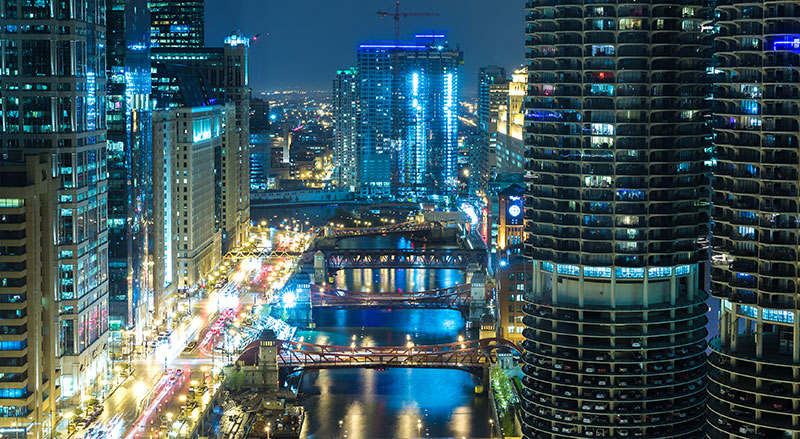Downtown Chicago Office Vacancy Changes & Predictions
Submitted on Thursday, April 20, 2017 - 8:54am
 For the past seven quarters, the Chicago commercial real estate market has been working in favor of the landlords, as the demand for downtown office space has increased and the vacancy rates have fallen to the lowest they have been since 2001.
For the past seven quarters, the Chicago commercial real estate market has been working in favor of the landlords, as the demand for downtown office space has increased and the vacancy rates have fallen to the lowest they have been since 2001. This is great for the city and building owners, however, it is also important to keep this in perspective. Many events have occurred since 2001, which have helped to create a sharp increase in vacancies over the past sixteen years - primarily, the 2008 recession and the trend towards a smaller creative office layout. Still, the decreasing vacancy rate is a definite sign that the economy is on the upswing.
Chicago’s Flooded Commercial Real Estate Market
Although encouraging, building owners are cautiously optimistic as the increase in demand for downtown office space has also triggered developers to invest in prime commercial real estate in order to build new high rises. With several high-rise office buildings under construction – many slated to open in 2017 – the commercial real estate market in Chicago is about to be flooded with a wave of new vacancies and building owners are preparing for their windfall to die down.
As the supply of office space increases, Chicago’s businesses will have more Class A leasing options to choose from, leading many to consider relocating to another space within the city and subleasing their current space. As a result, landlords are trying to lock in their tenants now with deals on lease renewals.
As mentioned by Crain’s in its article about the Chicago commercial real estate boom, the wealth of newly constructed commercial space will also create so-called “shadow spaces.” Shadow space is where office buildings face a looming increase in their vacancy, but tenants have not vacated the space yet since their new space has yet to be completed. Eventually, this trend may give tenants an edge, but for now demand has maintained its growth and rents have continued to increase as the current asking rate is up 2.4% from the last quarter of 2016.
Contributing Factors to Chicago’s Low Commercial Real Estate Vacancies
One of the factors that led to the low vacancy rate in Downtown Chicago’s commercial real estate market is that several well-known companies have recently relocated to the city from the surrounding suburbs or from other cities entirely.
In fact, since 2007, downtown Chicago has welcomed more than 50 new companies. Some of the recent high-profile additions include:
- Motorola Solutions, which moved from Schaumburg to the West Loop
- ConAgra, which moved from Naperville to River North; and
- McDonald’s, which recently announced plans to move their headquarters from Oak Brook to Chicago’s West Town neighborhood by spring of 2018.
The McDonald’s move is also a sign of the strength of the Fulton market in the West Loop submarket, as McDonald’s is in the process of redeveloping the former site of Oprah Winfrey’s Harpo Studios.
Regardless of the outcome, 2017 is expected to be a busy year for Chicago commercial real estate. Although the introduction of several new office high rises may have an effect on the vacancy rate, currently the demand has remained strong, especially in the West Loop.
In addition, the increase in commercial high rises will provide opportunities for larger companies to move downtown, whereas their options were previously somewhat limited.


